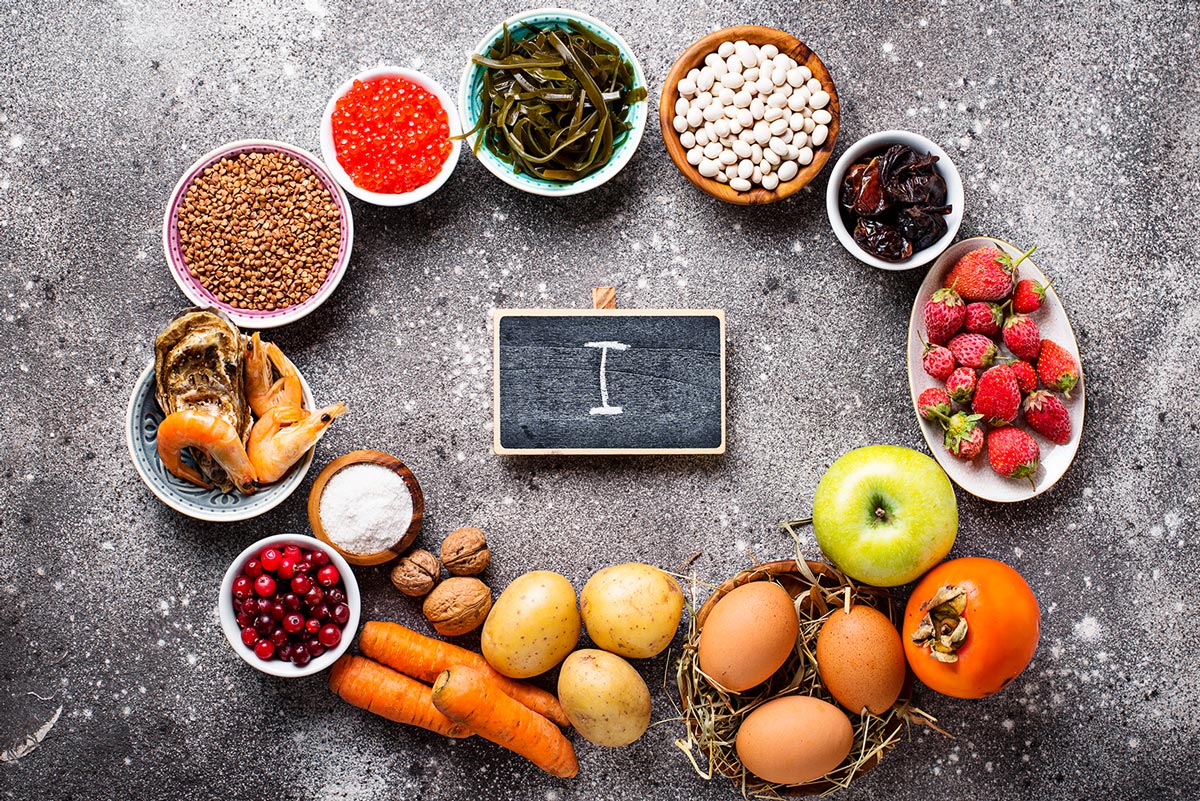Many articles and experts discuss iodine. It’s a mineral your body needs for your thyroid gland, but one that your body doesn’t produce. But what does an iodine deficiency look and feel like? Why should you care whether or not your body has this essential mineral?
The Face of Iodine Deficiency
Healthline shares the following 10 signs and symptoms of an iodine deficiency:
- Swelling in the Neck
- “Swelling in the front of the neck, or a goiter is a common symptom of an iodine deficiency. It occurs when your thyroid gland is forced to make thyroid hormones when there is a low supply of iodine in the body.”
- Unexpected Weight Gain
- “Low iodine levels may slow your metabolism and encourage food to be stored as fat, rather than be burned as energy. This may lead to weight gain.”
- Fatigue and Weakness
- “Low iodine levels may leave you feeling tired, sluggish, and weak. This is because your body needs the mineral to make energy.”
- Hair Loss
- “An iodine deficiency may prevent hair follicles from regenerating. Fortunately, getting sufficient iodine can help correct hair loss that occurs due to an iodine deficiency.”
- Dry, Flaky Skin
- “Dry, flaky skin may occur with an iodine deficiency, as the mineral helps your skin cells regenerate. It also helps your body sweat and hydrates your skin.”
- Feeling Colder Than Usual
- “Iodine helps generate body heat, so low levels of it may leave you feeling colder than usual.”
- Changes in Heart Rate
- “An iodine deficiency may slow your heart rate, which may leave you feeling weak, fatigued, dizzy, and at risk of fainting.”
- Trouble Learning and Remembering
- “An iodine deficiency at any age may cause you to struggle to learn and remember things.”
- Problems During Pregnancy
- “Getting enough iodine is especially important for pregnant and breastfeeding women, as they have higher needs. An iodine deficiency may cause severe side effects, especially for the baby, such as stunted growth and brain development.”
- Heavy or Irregular Periods
- “This is because low thyroid hormone levels may interfere with hormones that are involved in regulating the menstrual cycle.”
Where is iodine found?
Don’t confuse salt and iodized salt; they are different. Processed food typically does not contain iodized salt and if it does, the ingredient list of that food will include it. Since processed foods are “the major source of salt for most Americans” and diets that exclude food groups with iodine (such as dairy and bread) are on the rise, it’s important to clarify where you can find the iodine your body needs so that you can do just that… find it!
The following are excellent sources of iodine:
- Nascent Iodine Advanced
- This liquid supplement is an answer to your no-pill supplement prayers. With only a few drops needed, this may be one of the easiest-to-consume supplements.
- Truehope produces the most-studied micronutrient in the world, EMPowerplus Advanced, and they also produce one of the highest quality iodine supplements: Nascent Iodine Advanced.
- Iodized salt
- If you want to increase your iodine intake through salt, decrease the salt in your diet from processed foods and use iodized salt when cooking.
- Seaweed, saltwater, fish (cod), and seafood (shrimp)
- Dairy products (yogurt, milk, cheese, cottage cheese)
- Breast milk, if the mother’s iodine intake is adequate
Just like your body needs oxygen but doesn’t produce it, your body needs iodine but doesn’t produce it. The difference is that lack of oxygen triggers an immediate response from your body that can not be ignored. Iodine deficiency, however, is a silent serpent that slithers around, releasing venom and strangling you from the inside out. Respect your body’s need for iodine, and honor that need daily if you want to function at your absolute best.
Author: Evelyn Lindell
Certified Health & Wellness Coach

